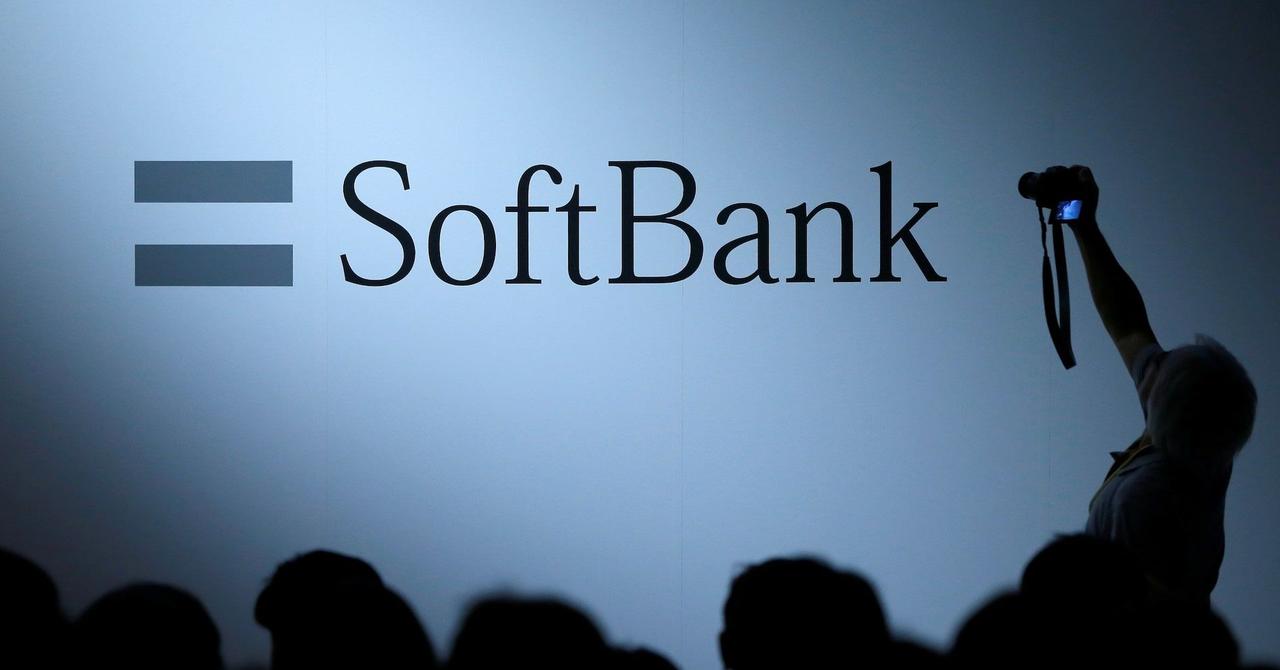AI Agents in Enterprise: Salesforce and Outreach Unveil New Platforms with Surprising Insights
2 Sources
2 Sources
[1]
Salesforce used AI to cut support load by 5% -- but the real win was teaching bots to say 'I'm sorry'
Want smarter insights in your inbox? Sign up for our weekly newsletters to get only what matters to enterprise AI, data, and security leaders. Subscribe Now Salesforce has crossed a significant threshold in the enterprise AI race, surpassing 1 million autonomous agent conversations on its help portal -- a milestone that offers a rare glimpse into what it takes to deploy AI agents at massive scale and the surprising lessons learned along the way. The achievement, confirmed by company executives in exclusive interviews with VentureBeat, comes just nine months after Salesforce launched Agentforce on its Help Portal in October. The platform now resolves 84% of customer queries autonomously, has led to a 5% reduction in support case volume, and enabled the company to redeploy 500 human support engineers to higher-value roles. But perhaps more valuable than the raw numbers are the hard-won insights Salesforce gleaned from being what executives call "customer zero" for their own AI agent technology -- lessons that challenge conventional wisdom about enterprise AI deployment and reveal the delicate balance required between technological capability and human empathy. How Salesforce scaled from 126 to 45,000 AI conversations weekly using phased deployment "We started really small. We launched basically to a cohort of customers on our Help Portal. It had to be English to start with. You had to be logged in and we released it to about 10% of our traffic," explains Bernard Shaw, SVP of Digital Customer Success at Salesforce, who led the Agentforce implementation. "The first week, I think there was 126 conversations, if I remember rightly. So me and my team could read through each one of them." This methodical approach -- starting with a controlled rollout before expanding to handle the current average of 45,000 conversations weekly -- stands in stark contrast to the "move fast and break things" ethos often associated with AI deployment. The phased release allowed Salesforce to identify and fix critical issues before they could impact the broader customer base. The technical foundation proved crucial. Unlike traditional chatbots that rely on decision trees and pre-programmed responses, Agentforce leverages Salesforce's Data Cloud to access and synthesize information from 740,000 pieces of content across multiple languages and product lines. "The biggest difference here is, coming back to my data cloud thing is we were able to go out the gate and answer pretty much any question about any Salesforce product," Shaw notes. "I don't think we could have done it without data cloud." Why Salesforce taught its AI agents empathy after customers rejected cold, robotic responses One of the most striking revelations from Salesforce's journey involves what Joe Inzerillo, the company's Chief Digital Officer, calls "the human part" of being a support agent. "When we first launched the agent, we were really concerned about, like, data factualism, you know, what is it getting the right data? Is it given the right answers and stuff like that? And what we realized is we kind of forgot about the human part," Inzerillo reveals. "Somebody calls down and they're like, hey, my stuff's broken. I have a sub one incident right now, and you just come into like, 'All right, well, I'll open a ticket for you.' It doesn't feel great." This realization led to a fundamental shift in how Salesforce approached AI agent design. The company took its existing soft skills training program for human support engineers -- what they call "the art of service" -- and integrated it directly into Agentforce's prompts and behaviors. "If you come now and say, 'Hey, I'm having a Salesforce outage,' agent force will apologize. 'I'm so sorry. Like, that's terrible. Let me get you through,' and we'll get that through to our engineering team," Shaw explains. The impact on customer satisfaction was immediate and measurable. The surprising reason Salesforce increased human handoffs from 1% to 5% for better customer outcomes Perhaps no metric better illustrates the complexity of deploying enterprise AI agents than Salesforce's evolving approach to human handoffs. Initially, the company celebrated a 1% handoff rate -- meaning only 1% of conversations were escalated from AI to human agents. "We were literally high fiving each other, going, 'oh my god, like only 1%,'" Shaw recalls. "And then we look at the actual conversation. Was terrible. People were frustrated. They wanted to go to a human. The agent kept trying. It was just getting in the way." This led to a counterintuitive insight: making it harder for customers to reach humans actually degraded the overall experience. Salesforce adjusted its approach, and the handoff rate rose to approximately 5%. "I actually feel really good about that," Shaw emphasizes. "If you want to create a case, you want to talk to a support engineer, that's fine. Go ahead and do that." Inzerillo frames this as a fundamental shift in thinking about service metrics: "At 5% you really did get the vast, vast, vast majority in that 95% solved, and the people who didn't got to a human faster. And so therefore their CSAT went up in the hybrid approach, where you had an agent and a human working together, you got better results than each of them had independently." How 'content collisions' forced Salesforce to delete thousands of help articles for AI accuracy Salesforce's experience also revealed critical lessons about content management that many enterprises overlook when deploying AI. Despite having 740,000 pieces of content across multiple languages, the company discovered that abundance created its own problems. "There's this words my team has been using that are new words to me, of content collisions," Shaw explains. "Loads of password reset articles. And so it struggles on what's the right article for me to take the chunks into Data Cloud and go to OpenAI and back and answer?" This led to an extensive "content hygiene" initiative where Salesforce deleted outdated content, fixed inaccuracies, and consolidated redundant articles. The lesson: AI agents are only as good as the knowledge they can access, and sometimes less is more. The Microsoft Teams integration that exposed why rigid AI guardrails backfire One of the most enlightening mistakes Salesforce made involved being overly restrictive with AI guardrails. Initially, the company instructed Agentforce not to discuss competitors, listing every major rival by name. "We were worried people were going to come in and go, 'is HubSpot better than Salesforce' or something like that," Shaw admits. But this created an unexpected problem: when customers asked legitimate questions about integrating Microsoft Teams with Salesforce, the agent refused to answer because Microsoft was on the competitor list. The solution was elegantly simple: instead of rigid rules, Salesforce replaced the restrictive guardrails with a single instruction to "act in Salesforce's best interest in everything you do." "We realized we were still treating it like an old school chatbot, and what we needed to do is we needed to let the LLM be an LLM," Shaw reflects. Voice interfaces and multilingual support drive Salesforce's next phase of AI agent evolution Looking ahead, Salesforce is preparing for what both executives see as the next major evolution in AI agents: voice interfaces. "I actually believe voice is the UX of agents," Shaw states. The company is developing iOS and Android native apps with voice capabilities, with plans to showcase them at Dreamforce later this year. Inzerillo, drawing on his experience leading digital transformation at Disney, adds crucial context: "What's important about voice is to understand that the chat is really foundational to the voice. Because chat, like, you still have to have all your information, you still have to have all those rules... If you jump right to voice, the real problem with voice is it's got to be very fast and it's got to be very accurate." The company has already expanded Agentforce to support Japanese using an innovative approach -- rather than translating content, the system translates customer queries to English, retrieves relevant information, and translates responses back. With 87% resolution rates in Japanese after just three weeks, Salesforce plans to add French, German, Italian, and Spanish support by the end of July. Four critical lessons from Salesforce's million-conversation journey for enterprise AI deployment For enterprises considering their own AI agent deployments, Salesforce's journey offers several critical insights: * Start Small, Think Big: "Start small and then grow it out," Shaw advises. The ability to review every conversation in early stages provides invaluable learning opportunities that would be impossible at scale. * Data Hygiene Matters: "Be really conscious of your data," Inzerillo emphasizes. "Don't over curate your data, but also don't under curate your data and really think through, like, how do you best position the company?" * Embrace Flexibility: Traditional organizational structures may not align with AI capabilities. As Inzerillo notes, "If they try to take an agentic future and shove it into yesterday's org chart, it's going to be a very frustrating experience." * Measure What Matters: Success metrics for AI agents differ from traditional support metrics. Response accuracy is important, but so are empathy, appropriate escalation, and overall customer satisfaction. The billion-dollar question: what happens after you beat human performance? As Salesforce's AI agents now outperform human agents on key metrics like resolution rate and handle time, Inzerillo poses a thought-provoking question: "What do you measure after you beat the human?" This question gets to the heart of what may be the most significant implication of Salesforce's million-conversation milestone. The company isn't just automating customer service -- it's redefining what good service looks like in an AI-first world. "We wanted to be the showcase to our customers and how we use agent force in our own experiences," Shaw explains. "Part of why we do this... is so that we can learn these things, feed it back into our product teams, into our engineering teams to improve the product and then share these learnings with our customers." With enterprise spending on generative AI solutions projected to reach $143 billion by 2027, according to forecasts from International Data Corporation (IDC), Salesforce's real-world lessons from the frontlines of deployment offer a crucial roadmap for organizations navigating their own AI transformations. Deloitte also estimates that global enterprise investments in generative AI could surpass $150 billion by 2027, reinforcing the scale and urgency of this technological shift. The message is clear: success in the AI agent era requires more than just sophisticated technology. It demands a fundamental rethinking of how humans and machines work together, a commitment to continuous learning and iteration, and perhaps most surprisingly, a recognition that the most advanced AI agents are those that remember to be human. As Shaw puts it: "You now have two employees. You have an agentic AI agent, and you have a human employee. You need to train both on the soft skills, the art of service." In the end, Salesforce's million conversations may be less about the milestone itself and more about what it represents: the emergence of a new paradigm where digital labor doesn't replace human work but transforms it, creating possibilities that neither humans nor machines could achieve alone.
[2]
Outreach unveils AI-driven revenue workflow platform. Here's what it means for CROs
At Unleash, his first Outreach annual customer conference as CEO, Abhijit Mitra said that technology is best served when in the service of people. This is as true for generative AI as it is for any other technology. So, when Outreach announced its AI agents at the conference, the key point was not the agents themselves, but the use cases they enable. Mitra is hearing three themes from Chief Revenue Officers (CROs). They want: But these aren't new challenges. What's new, according to Mitra, is AI and its supposed ability to solve every challenge for us. AI adoption is growing at an astonishing rate - Mitra cites the example that the adoption of ChatGPT over the last three years is equivalent to the adoption of the Internet over the last 23 years. Despite all the buzzwords, most companies are still stuck at the basics of: How is Outreach helping answer these questions? With a newly re-imagined AI Revenue Workflow Platform. The idea is that instead of working with siloed tools, work with one platform powered by data, automation, and AI. Let's break the name down to explain how it works: What's interesting about the platform is that you don't necessarily know you are using AI Agents. If you deploy Outreach today and deploy the agents (which we'll discuss in a minute), you'll notice that the admin experience hasn't changed much, except that there is more prompt engineering built in. Mitra says that Large Language Models (LLMs) are fed prompts and data from the platform, and the AI takes action based on the guidance you provide. It's important to note that Outreach has established an infrastructure that incorporates robust data access control and governance measures to safeguard its customers' data. Even the front-end experience for sales representatives, account executives (AEs), and account managers hasn't changed significantly. There are no user interfaces (UIs) because AI operates behind the scenes, analyzing the data and taking action when the time is right. AI agents augment the existing rules and automations. Mitra argues: Now it can actually come to you and ask for your permission to take an action, or it can take the action autonomously, and then it basically assigns you to work as a human, saying that, 'Hey, I've done all of this work, so why don't you do your piece now?'. So, in the end, the experience is like a lot of work getting assigned to you. Everything else is AI behind the scenes. So that's how it's architected. It's the same experience that we had for admins and for users, but with a lot more configurability, governance on AI built into that. So what are the new AI agents on the platform? First, there is the AI Revenue Agent. This agent supports a number of use cases, including inbound and outbound prospecting, customer retention, renewals, and expansion. Mitra makes an important differentiation when he says that there are agents, and then there are use cases of an agent. Outreach positions the use case because that's what's important. Understand your business challenge and then figure out how an agent can help, he advises: We are not building a set of tools that we give to you and say, you figure it out. What we are doing is building these very purpose-built agents and then deploying well-thought-out use cases that we will deploy for you on our platform. So these are very purpose-built. Because most customers need a lot of guidance to figure out what to do with AI and how it's going to solve their business challenges, and we don't want them to figure this out by themselves. We do it for them, essentially. And that, I think, is going to be our focus for the foreseeable future. Other AI agents that are upcoming include: Plus, there are three other AI assistants: Smart Forecast Assist for scenario forecasting, Smart Analytics Assist for asking questions about your analytics, and Win/Loss Insights to inform your go-to-market (GTM) strategies. According to Mitra, there are hundreds of use cases where agents can be leveraged for specific parts of the workflow, and new ones are being discovered all the time. Scott Gardner, executive vice president of sales and marketing for Siemens Digital Industries, shared one use case (forecasting) at Unleash, saying that implementing Outreach enabled Siemens to standardize a global forecasting process across 190 countries: That one complete enterprise platform, that one place where the sellers live, that is easy for them to use, that gives them the information that they need, that doesn't bombard them with distractive stuff that they just don't need to know about. That is core to how we've driven the speed. Even countries that took some persuading, that we wanted to introduce forecasting to them on a standardized methodology, are now loving that process because they can see how it lets them really drive that drumbeat in their business and be more effective. That complete, enterprise-grade platform is, I think, important. If AI agents are doing all of the grunt work, what is really left for the salesperson to do? Yes, they will be meeting with customers and building relationships. And yes, it makes sense for AI to take on a lot of the tedious work that consumes so much of a salesperson's time. But isn't there the potential for the salesperson to miss things in the data that the AI doesn't see? Also, if AI is doing the bulk of the work, how many salespeople do you need in a company now? Mitra suggests: My vision, our vision, is not to replace people with AI. I don't think that's going to happen realistically in our time, in our lifespan, at least, and hopefully not even beyond that. What we want to do, and my view on technology has always been that we build technology so that it helps us and not replaces us. Otherwise, there's no point in building technology. So that's sort of been my view. Technology in the service of people, so it's going to help us become much more productive. What about Business Development Representatives (BDRs) and Sales Development Respresentatives (SDRs)? How do AI agents impact them? Mitra's vision is that they now have the opportunity to go deeper and take the conversation one step further than they do today. For example, they could spend more time understanding specific industries, allowing them to have more intelligent conversations than simply reading a script. Although Outreach, like other tech vendors, is moving in the direction of a Model Context Protocol (MCP) server and enabling third-party integrations to its platform, that's not its core focus right now. The firm is interested in defining more industry-specific use cases. In finding ways for humans to have deeper interactions with other humans? Outreach wants to find ways for its AI agents to truly understand the needs of an industry, says Mitra: So if I have a set of product mix, how can I make sure that the right products are being positioned at the right time to my right customers through pipeline build, and can my AI agents have access to my back-end inventory and supply chain, and production control system data to take action on that? It's a different level of thinking than what we have heard so far in the market. So these are things that we are now investigating, like how to make that more industry specific, more use case specific, so that you as a seller or as a marketeer can have a more meaningful discussion on how we can be more relevant for you and be core to your business. The best way to summarize what Outreach is doing with AI and what you should consider as your company incorporates it into its process comes from Thomas Hansen, President of Amplitude. This is the advice he offered at the Unleash conference:
Share
Share
Copy Link
Salesforce and Outreach introduce AI-driven platforms for customer support and sales, revealing unexpected lessons about empathy, human interaction, and content management in AI deployment.
Salesforce's Agentforce: Balancing AI Efficiency with Human Empathy
Salesforce has achieved a significant milestone in enterprise AI, surpassing 1 million autonomous agent conversations on its help portal
1
. The company's AI platform, Agentforce, now resolves 84% of customer queries autonomously and has led to a 5% reduction in support case volume. This achievement has allowed Salesforce to redeploy 500 human support engineers to higher-value roles1
.Bernard Shaw, SVP of Digital Customer Success at Salesforce, revealed that the company adopted a phased deployment approach, starting with a small cohort of English-speaking customers
1
. This methodical strategy allowed Salesforce to identify and address critical issues before expanding the service.The Importance of Empathy in AI Interactions
One of the most striking revelations from Salesforce's journey was the importance of incorporating empathy into AI interactions. Joe Inzerillo, Salesforce's Chief Digital Officer, explained that initially, they focused solely on data accuracy, overlooking the human aspect of customer support
1
.This realization led Salesforce to integrate its "art of service" soft skills training program into Agentforce's prompts and behaviors. As a result, the AI now responds with empathy to customer issues, significantly improving customer satisfaction
1
.Counterintuitive Insights on Human Handoffs
Salesforce's experience challenged conventional wisdom about minimizing human involvement in AI-driven support. Initially celebrating a 1% handoff rate from AI to human agents, the company soon realized this approach was frustrating customers
1
.Bernard Shaw explained, "We were literally high fiving each other, going, 'oh my god, like only 1%. And then we look at the actual conversation. Was terrible. People were frustrated. They wanted to go to a human. The agent kept trying. It was just getting in the way.'"
1
This insight led Salesforce to increase the handoff rate to approximately 5%, resulting in improved customer satisfaction and overall experience
1
.Content Management Challenges in AI Deployment
Salesforce's journey also highlighted the importance of effective content management for AI accuracy. Despite having 740,000 pieces of content, the company discovered that abundance created its own problems, leading to "content collisions"
1
.Outreach's AI-Driven Revenue Workflow Platform

Source: diginomica
Meanwhile, Outreach, another player in the enterprise AI space, has unveiled its AI-driven revenue workflow platform
2
. Abhijit Mitra, Outreach's CEO, emphasized that the platform is designed to address key challenges faced by Chief Revenue Officers (CROs), including pipeline generation, deal execution, and revenue retention2
.The platform integrates data, automation, and AI to create a unified workflow system. Mitra explained that the AI agents operate behind the scenes, analyzing data and taking action when appropriate, rather than introducing new user interfaces
2
.Related Stories
AI Agents and Use Cases
Outreach has introduced several AI agents, including the AI Revenue Agent, which supports various use cases such as inbound and outbound prospecting, customer retention, and renewals
2
. Other upcoming agents include the AI Coaching Agent, AI Deal Intelligence Agent, and AI Account Intelligence Agent2
.Mitra stressed the importance of focusing on specific use cases rather than providing generic AI tools: "We are not building a set of tools that we give to you and say, you figure it out. What we are doing is building these very purpose-built agents and then deploying well-thought-out use cases that we will deploy for you on our platform."
2
The Future of AI in Sales and Customer Support

Source: VentureBeat
Both Salesforce and Outreach emphasize that their AI solutions are designed to augment human work rather than replace it. Mitra stated, "My vision, our vision, is not to replace people with AI. I don't think that's going to happen realistically in our time, in our lifespan, at least, and hopefully not even beyond that."
2
As AI continues to evolve in the enterprise space, these insights from Salesforce and Outreach highlight the importance of balancing technological capabilities with human empathy and interaction, challenging companies to rethink their approach to AI deployment in customer-facing roles.
References
Summarized by
Navi
[1]
Related Stories
Recent Highlights
1
Meta acquires Manus for $2 billion, adding revenue-generating AI agents to its platforms
Business and Economy

2
Nvidia locks in $20 billion Groq deal, securing AI chip rival's technology and talent
Business and Economy

3
Geoffrey Hinton warns AI job replacement will accelerate in 2026 as systems gain new capabilities
Technology








